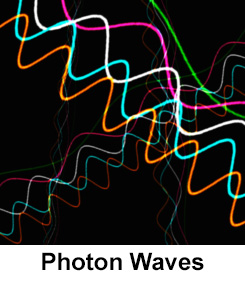It is the general perception and concomitant consensus that on this planet we live in the so-called “electronic age.” In print and electronic media the era we live in is also referred to as the “age of information.”
The first definition of the age is not quite accurate. Certainly, there are all the appearances of “electronics” in our environment—gadgets of all of kinds, and communications and information technologies. But this is also appearance. As it has been said, the fish cannot tell it is in the fishbowl.
The second moniker is, of course, not entirely accurate either. It feels like the “age of information” because an avalanche of information surrounds us and inundates us. The truth is, and even a cursory review of history will show, people in nomadic tribes, agriculturally-based villages, city-states, nations, regions, and now international societies have always relied on “information” in one way or another for survival, sustenance, and strength. The processing of information is in our DNA. After all, even DNA is about information.
To take a long view of the human species’ communications evolution, Homo sapiens and all his predecessors have moved through several stages. The first is body language. Then about 1.8 million years ago nature saw fit to move the voicebox further down the throat thereby creating a more efficient physical relationship among the voicebox, the tongue, and the mouth. This physiological adjustment allowed for the development of emitted sounds of greater complexity, and, thus, spoken language. Hence, the beginning of the age of orality. About 5,000 years ago as a way to keep track of economic transactions, early antecedents of the present accounting profession evolved “tokens” that eventually evolved into early writing systems. Then in the mid-15th century Gutenberg introduced the movable type printing press and the age of efficient printing was born, accelerating the European Renaissance and eventually the Industrial Revolution. And in 1844 A.D. Samuel F.B. Morse commercially introduces the telegraph and the so-called “electronic age” was launched.
It is my contention that a little more than a 100 years after the birth of the electronic age shortly after World War II we entered yet another “age” in Homo Sapiens’ communications evolution, this one based not on electrons, but on photons. To put it another way, we have already entered the age of “light” or what I am calling “the photonic age.”
in Homo Sapiens’ communications evolution, this one based not on electrons, but on photons. To put it another way, we have already entered the age of “light” or what I am calling “the photonic age.”
The use of “light” technology has spread “silently” into various aspects of society. And as Marshall McLuhan, author of Understanding Media: The Extensions of Man (McGraw-Hill 1964), has stated: “Once a new technology comes into a social milieu, it cannot cease to permeate that milieu until every institution is saturated.” This is true of orality, early writing, typography, electronics, and now photonics.
The evidence that we are now living in an age of photonics is all around us, even though it is not readily apparent. One can find photonic technologies in medicine and science, the military, education, finance, live and electronic entertainment, and consumer electronics. And many of these photonic technologies are not only becoming more present, they are also replacing older, more familiar technologies.
As the National Academy of Engineering has pointed out, “From surgical instruments and precision guides in construction to barcode scanners and compact disc readers, lasers are integral to many aspects of modern life and work. But perhaps the farthest-flung contribution of the 20th century’s combination of optics and electronics has been in telecommunications. With the advent of highly transparent fiber-optic cable in the 1970s, very high-frequency laser signals now carry phenomenal loads of telephone conversations and data across the country and around the world.”
As George Basalla, professor of the history of technology at the University of Delaware, cogently points out in his book The Evolution of Technology (Cambridge History of Science Series, 1988), all technologies have antecedents. In other words, they do not just appear, like mice via spontaneous generation in straw as those in the Middle Ages surmised.
Photonic or laser technologies did not just appear in the mid-1950s. In 1917 Albert Einstein proposed the theory of stimulated emission—that is, if an atom in a high-energy state is stimulated by a photon of the right wavelength, another photon of the same wavelength and direction of travel will be created. Stimulated emission forms the basis for research into harnessing photons to amplify the energy of light.
 Leaping forward over 90 years, in 1997 The Fiber Optic Link Around the Globe (FLAG) became the longest single-cable network in the world and provides infrastructure for the next generation of Internet applications. The 17,500-mile cable begins in England and runs through the Strait of Gibraltar to Palermo, Sicily, before crossing the Mediterranean to Egypt. It then goes overland to the FLAG operations center in Dubai, United Arab Emirates, before crossing the Indian Ocean, Bay of Bengal, and Andaman Sea; through Thailand; and across the South China Sea to Hong Kong and Japan. (Copyright © 2009 by National Academy of Engineering).
Leaping forward over 90 years, in 1997 The Fiber Optic Link Around the Globe (FLAG) became the longest single-cable network in the world and provides infrastructure for the next generation of Internet applications. The 17,500-mile cable begins in England and runs through the Strait of Gibraltar to Palermo, Sicily, before crossing the Mediterranean to Egypt. It then goes overland to the FLAG operations center in Dubai, United Arab Emirates, before crossing the Indian Ocean, Bay of Bengal, and Andaman Sea; through Thailand; and across the South China Sea to Hong Kong and Japan. (Copyright © 2009 by National Academy of Engineering).
And today lasers have found applications almost beyond number. In manufacturing, infrared carbon dioxide lasers cut and heat-treat metal, trim computer chips, drill tiny holes in tough ceramics, silently slice through textiles, and pierce the openings in baby bottle nipples. In construction the narrow, straight beams of lasers guide the laying of pipelines, drilling of tunnels, grading of land, and alignment of buildings. In medicine, detached retinas are spot-welded back in place with an argon laser’s green light, which passes harmlessly through the central part of the eye but is absorbed by the blood-rich tissue at the back. Medical lasers are also used to make surgical incisions while simultaneously cauterizing blood vessels to minimize bleeding, and they allow doctors to perform exquisitely precise surgery on the brain and inner ear.
Many everyday devices have lasers at their hearts. A CD or DVD player, for example, reads the digital contents of a rapidly spinning disc by bouncing laser light off minuscule irregularities stamped onto the  disc’s surface. Barcode scanners in supermarkets play a laser beam over a printed pattern of lines and spaces to extract price information and keep track of inventory.
disc’s surface. Barcode scanners in supermarkets play a laser beam over a printed pattern of lines and spaces to extract price information and keep track of inventory.
Pulsed lasers are no less versatile than their continuous-beam brethren. They can function like optical radar, picking up reflections from objects as small as air molecules, enabling meteorologists to detect wind direction or measure air density. The reflections can also be timed to measure distances—in some cases, very great indeed. A high-powered pulsed laser, aimed at mirrors that astronauts placed on the lunar surface, was used to determine the distance from earth to the moon to within 2 inches. The pulses of some lasers are so brief—a few quadrillionths of a second—that they can visually freeze the lightning-fast movements of molecules in a chemical reaction. And super-powerful laser pulses may someday serve as the trigger for controlled fusion, the long-sought thermonuclear process that could provide humankind with almost boundless energy.
When early writing systems appeared in the Fertile Crescent in the Middle East around 5,000 years ago I’m quite sure the inhabitants there did not all of a sudden observe “Hmmm, we’re not just an oral-only society anymore. We’ve entered the age of early writing.” In the early 21st century, however, with global literacy at an all-time high of around 85%, we have the benefit of much hindsight. We have also had the benefit of such media scholars as Harold Innis, Marshall McLuhan, Neil Postman, et al. Their collective scholarship has provided the intellectual foundation for looking at the world with a wide view. It is from this perspective that I have come to the conclusion that we have entered a new “communications” age—the age of photonics.
Please write to me at meiienterprises@aol.com if you have any comments on this or any other of my blogs.
Eugene Marlow, Ph.D.
November 25, 2013
*A version of this essay by Eugene Marlow, Ph.D. originally appeared in Etc: A Review of General Semantics, Volume 66, Number 4, October 2009.
© Eugene Marlow 2013


